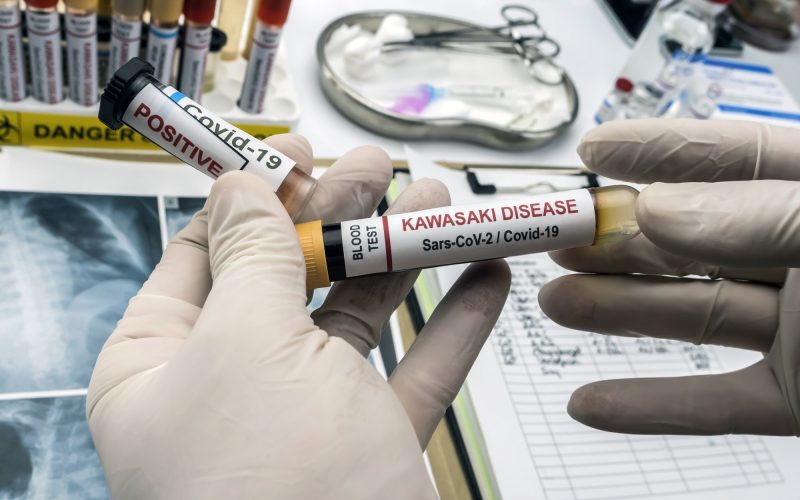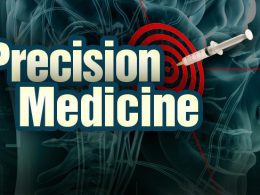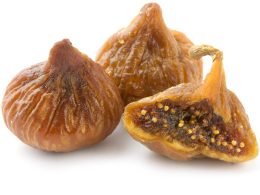Introduction
Kawasaki Insights, a predominantly childhood illness, intricately involves inflammation in blood vessels throughout the body. Often affecting children under the age of 5, this ailment unfolds in three distinct phases, with a persistent fever emerging as the initial and prominent sign.

Signs & Symptoms
- Fever Phase (Up to 2 Weeks):
- Red Eyes: A telltale sign of inflammation.
- Pink Rash: Extends across the back, belly, arms, legs, and genital area.
- Cracked Lips: Dryness accompanied by redness.
- “Strawberry” Tongue: Characterized by a white coating with red bumps.
- Sore Throat: A common symptom.
- Swollen Extremities: Palms of the hands and soles of the feet exhibit a purple-red hue.
- Lymph Gland Swelling: Notable in the neck.
- Second Phase (2 Weeks After Fever):
- Peeling Skin: Particularly on the hands and feet.
- Joint Pain: An additional manifestation.
- Gastrointestinal Distress: Diarrhea and vomiting.
- Abdominal Pain: Discomfort in the belly.
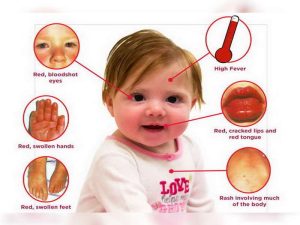
Complications
While prompt intervention often leads to swift recovery, delayed diagnosis can result in severe complications impacting the heart. These complications may include:
- Aneurysm Formation: Bulging in the walls of coronary arteries.
- Heart Inflammation: Affecting the muscle, lining, valves, and outer membrane.
- Arrhythmias: Disruptions in the normal heartbeat pattern.
- Heart Valve Issues: Potential complications.
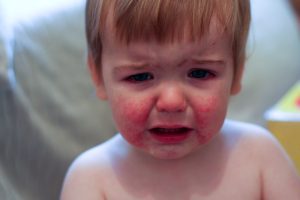
Causes
Despite ongoing research, the precise cause of Kawasaki Disease remains elusive. Not considered contagious, it exhibits a higher prevalence among children of Japanese and Korean descent, though it can affect children of any ethnic background.
Diagnosis
Diagnosing Kawasaki Disease involves a multifaceted approach. Physicians rely on a comprehensive examination of symptoms, emphasizing a prolonged fever. Additional diagnostic tools include echocardiograms and tests on blood and urine samples, aiding in the exclusion of other conditions like scarlet fever, measles, Rocky Mountain spotted fever, or juvenile rheumatoid arthritis.

Treatment Strategies
Early and aggressive intervention is pivotal in managing Kawasaki Disease. Treatment commonly includes:
- IV Dose of Immune Globulin (IVIG):
- Administered to combat infections and mitigate the risk of coronary artery aneurysms.
- High-dose Aspirin:
- Orally administered to alleviate inflammation until blood tests indicate improvement.
In instances where IVIG proves ineffective, steroids may be employed as an alternative to prevent coronary aneurysms. Treatment for other health problems.
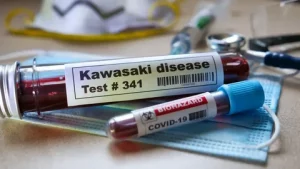
Precautionary Measures
Children undergoing high-dose aspirin treatment are advised to receive the annual flu vaccine, mitigating the small risk of Reye syndrome during viral illnesses.
Prognosis and Ongoing Care
Most children with Kawasaki Disease experience complete recovery, particularly when diagnosed and treated promptly. However, those who develop heart-related complications may necessitate ongoing monitoring by a cardiologist. A holistic approach to understanding Kawasaki Disease underscores the importance of vigilance, early detection, and comprehensive treatment strategies for the optimal well-being of affected children.






